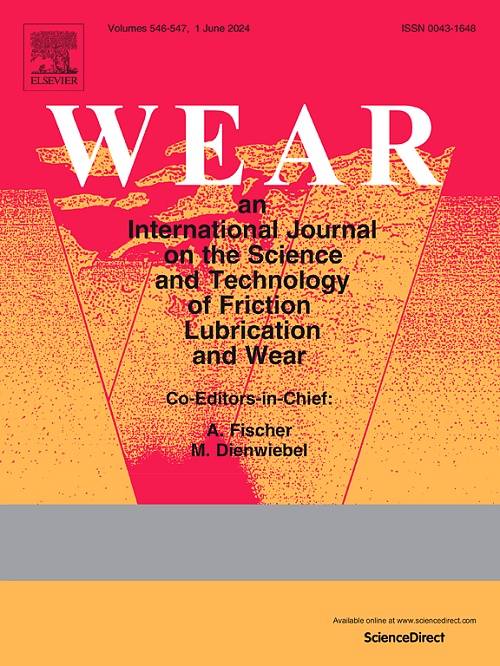Study on wheel polygonal wear of high-speed train caused by the unstable vibration of the disc brake system
IF 6.1
1区 工程技术
Q1 ENGINEERING, MECHANICAL
引用次数: 0
Abstract
To study the formation mechanism of wheel polygonal wear on high-speed train and propose corresponding inhibition measures. Based on the theory of frictional self-excited vibration, the finite element models of different types of high-speed train wheel rail systems are established. The frictional self-excited vibration characteristics of the wheel rail system during the braking process are investigated using complex eigenvalue analysis. The vibration modes and vibration responses of the axle-disc and wheel-disc braking devices are obtained using the transient dynamic analysis. The frequency distribution and corresponding mode shapes of the frictional self-excited vibration to clarify the relationship between the frictional self-excited vibration of disc brake subsystem and wheel rail subsystem. The formation mechanism of polygonal wear of high-speed train wheel is revealed. Finally, the parameter sensitivity of the braking unit coordination relationship is analyzed. Results show that during the train braking process, the friction self-excited vibration of the wheel-rail system induced by the coupling effect of the wheel-rail friction and disc brake system friction is the root cause of the wheel polygonal wear. The axle-disc braking device mainly dominates the formation of 20th order wheel polygonal wear. The disc brake device dominates the 447 Hz frictional self-excited vibration of the wheel rail system. Parameter sensitivity analysis results show that under the premise of ensuring the braking performance of the train, wheel polygonal wear can be suppressed by reducing the friction coefficient of the braking device. The greater the number of brake units, the better the stability of the wheel-rail system.
高速列车盘式制动系统不稳定振动引起的车轮多边形磨损研究
研究高速列车车轮多边形磨损的形成机理,并提出相应的抑制措施。基于摩擦自激振动理论,建立了不同类型高速列车轮轨系统的有限元模型。采用复特征值分析方法研究了轮轨系统在制动过程中的摩擦自激振动特性。通过瞬态动力学分析,得到了轴盘制动装置和轮盘制动装置的振动模态和振动响应。分析了摩擦自激振动的频率分布及其对应的振型,阐明了盘式制动子系统与轮轨子系统摩擦自激振动的关系。揭示了高速列车车轮多边形磨损的形成机理。最后,分析了制动单元协调关系的参数敏感性。结果表明,在列车制动过程中,轮轨摩擦与盘式制动系统摩擦的耦合效应所引起的轮轨系统摩擦自激振动是造成车轮多边形磨损的根本原因。轴盘制动装置主要控制20阶车轮多边形磨损的形成。盘式制动装置主导了轮轨系统447 Hz的摩擦自激振动。参数灵敏度分析结果表明,在保证列车制动性能的前提下,通过减小制动装置的摩擦系数可以抑制车轮多边形磨损。制动单元数量越多,轮轨系统的稳定性越好。
本文章由计算机程序翻译,如有差异,请以英文原文为准。
求助全文
约1分钟内获得全文
求助全文
来源期刊

Wear
工程技术-材料科学:综合
CiteScore
8.80
自引率
8.00%
发文量
280
审稿时长
47 days
期刊介绍:
Wear journal is dedicated to the advancement of basic and applied knowledge concerning the nature of wear of materials. Broadly, topics of interest range from development of fundamental understanding of the mechanisms of wear to innovative solutions to practical engineering problems. Authors of experimental studies are expected to comment on the repeatability of the data, and whenever possible, conduct multiple measurements under similar testing conditions. Further, Wear embraces the highest standards of professional ethics, and the detection of matching content, either in written or graphical form, from other publications by the current authors or by others, may result in rejection.
 求助内容:
求助内容: 应助结果提醒方式:
应助结果提醒方式:


